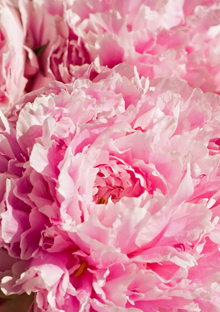Planting Peonies…Va-Va-Va-Bloom!

Photo: © 2009 Jupiterimages Corporation
Like Marilyn Monroe on a stem, peonies are glamorous, voluptuous, and heart-stoppingly unforgettable. They're also amazingly low-maintenance.
Peonies are the hussies of spring. No shrinking violets, they're so blowsy and brazen that a single glance can leave you breathless.Whether you're planting or arranging, it takes spunk to play well with peonies. Some meek souls will sprinkle in a blossom here or there, but why pass up a perfect chance to go berserk? Peonies come in a range of white, pinks, peaches, and reds, so clashing isn't a problem. And these girls are low-maintenance: You need peonies more than they need you. Except for some heavy-duty staking to keep the weighty flower heads from nodding, they're as close as you'll come to a free lunch, horticulturally speaking.
The party, splendid as it is, flames out early. Following the first major thunderstorm, peonies are history. The tidy foliage holds strong, but those cheerleader pom-poms dissolve into something reminiscent of what remained of the Wicked Witch of the West. Not everything, though, needs to be forever. Once the affair is over, you'll be left with some sizzling memories. And then: same time next year.
Facts to Grow On
- Peonies prefer a chilly reception—they do better in Vermont than in the Deep South.
- They love direct sun but can tolerate some afternoon shade.
- Plant roots (only experts use seeds) with their tops just below the surface of the soil (no deeper than one to two inches). Fall is the ideal time to plant.
- If peonies get less than an inch of rain a week, you should water them, but they should never be in soggy soil.
- Great sources for peonies: Countryman Peony Farm (802-485-8421; Song Sparrow Perennial Farm (SongSparrow.com); Reath's Nursery (ReathsNursery.com).
- The Shelburne Museum's Brick House, a 40-room mansion on Lake Champlain, is teeming with folk art as well as flowers. The house and its grounds are open to public tours beginning in July. (802-985-3346; ShelburneMuseum.org).



